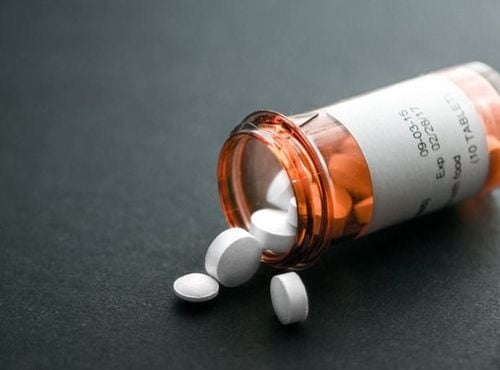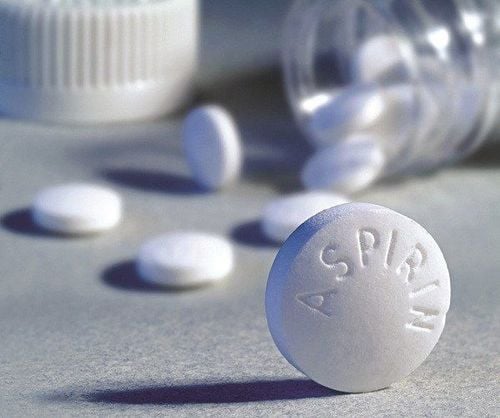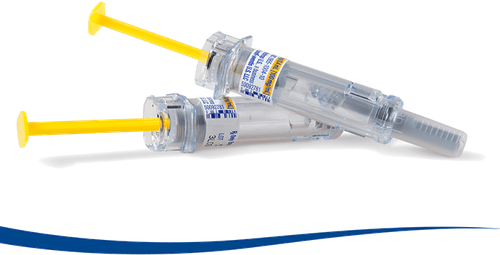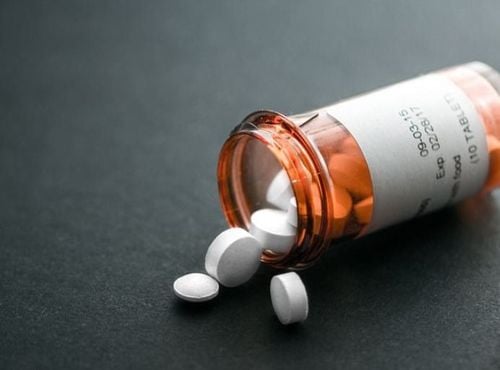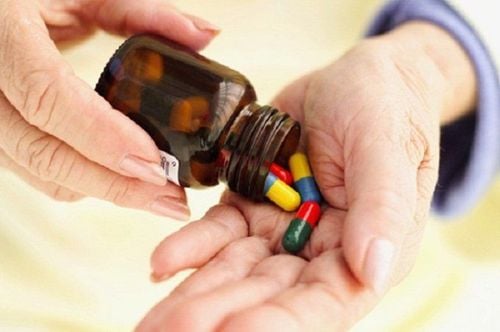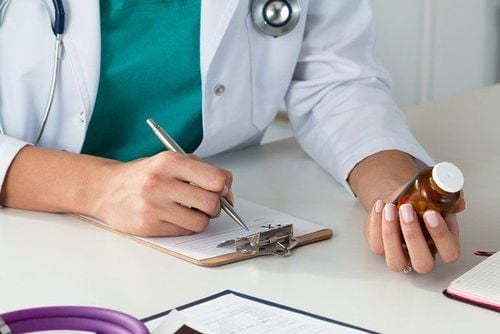This is an automatically translated article.
Edoxaban is used to prevent serious blood clots caused by atrial fibrillation. It is also used to treat certain blood clots such as deep vein thrombosis (DVT) or pulmonary embolism-PE. Edoxaban is an anticoagulant that works by blocking certain clotting proteins in your blood.
1. Indications and contraindications of the drug Edoxaban
Edoxaban is indicated in the following cases:
Prevention of blood clots in chronic atrial fibrillation Blood clots in the deep veins of the extremities A blood clot in the lungs Edoxaban is contraindicated in the following cases:
Surgery on the spine Increased risk of bleeding due to clotting disorders Bleeding Severe liver disease Lactating women Antiphospholipid antibody syndrome Epidural catheterization Stage 1 chronic kidney disease (normal) with signs of kidney damage Chronic kidney disease stage 3A (moderate) Chronic kidney disease stage 3B (moderate) Chronic kidney disease stage 4 (severe) Chronic kidney disease stage 5 (impaired) Kidney disease with the potential to decrease renal function Neurosurgery, local anesthetic injected in the epidural or subarachnoid space Deep peripheral nerve block Deep plexus block
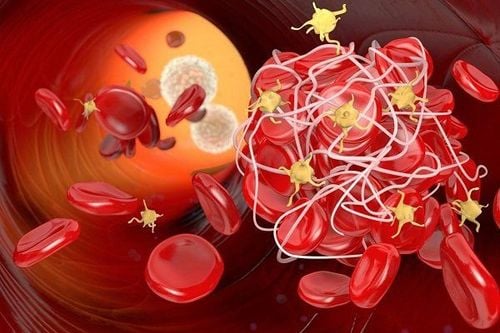
Thuốc Edoxaban giúp ngăn ngừa cục máu đông trong tĩnh mạch
2. How to use Edoxaban
Carefully read the medication instructions provided by your doctor before you start taking edoxaban and each time you refill it. If you have any questions about how to use Edoxaban, ask your doctor or pharmacist. Take Edoxaban by mouth with or without food as directed by your doctor, usually once daily. The dose of Edoxaban is calculated based on your medical condition, weight, response to treatment, and other medications you are taking. Be sure to tell your doctor and pharmacist about all the medicines you use (including prescription drugs, over-the-counter medicines, and herbal products). If you have trouble swallowing an Edoxaban tablet whole, you can crush the tablet and mix it with 2 to 3 ounces (60 to 90 ml) of water or apple sauce. Drink or eat the whole mixture immediately. If you are giving Edoxaban through a tube into your stomach (nasogastric tube), ask your healthcare professional for detailed instructions on how to properly mix and inject. Do not stop taking Edoxaban without consulting your doctor. Some conditions may get worse when Edoxaban is stopped suddenly. Use Edoxaban regularly to get the most benefit from it. To help you remember, take Edoxaban at the same time each day. Tests such as kidney function, hematocrit/hemoglobin, and red blood cell count may be performed periodically to monitor your progress or check for side effects.
3. Side effects of the drug Edoxaban
When using Edoxaban, you may bruise easily or have light bleeding (such as nosebleeds, bleeding from cuts). If one of these effects persists or gets worse, tell your doctor right away.
Remember that your doctor has prescribed Edoxaban because he or she has judged that the benefit to you outweighs the risk of side effects. Many people using Edoxaban do not experience any serious side effects.
Edoxaban can cause severe bleeding when it affects blood clotting proteins too much. Tell your doctor right away if you have any signs of serious bleeding while using Edoxaban, which include: Unusual pain/swelling/discomfort, unusual bruising, bleeding lasting from a cut or gum, persistent/frequent nosebleeds, unusually heavy/prolonged menstrual flow, pink/dark urine, coughing up blood, vomit that looks like coffee grounds or blood, pain severe headache, dizziness/fainting, unusual or persistent tiredness/weakness, bloody/black/tarry stools, trouble swallowing.
Get medical help right away if you have any signs of very serious bleeding while using Edoxaban, including: Vision changes, confusion, slurred speech, weakness on one side of the body.
A very serious allergic reaction to the drug Edoxaban is very rare. However, if you notice any symptoms of a serious allergic reaction to Edoxaban, including: Rash, itching/swelling (especially of the face/tongue/throat), trouble breathing, severe dizziness important, get medical help right away.

Thuốc Edoxaban có thể gây ra một số tác dụng phụ ngoài mong muốn
The following are Edoxaban side effects by likelihood:
Common Edoxaban side effects include:
Anemia Bleeding Nosebleeds Bruising Vaginal bleeding unrelated to menstruation Less common side effects of Edoxaban include:
Stomach or intestinal bleeding Abnormal liver function tests Bleeding from the mouth Bloody urine Rare side effects of Edoxaban include:
Thrombocytopenia in the blood Bleeding in the eye Stroke Hemorrhagic stroke Bleeding into the skull Leech nest Angioedema Angioedema Drug hypersensitivity reaction Lung tissue problem Spinal epidural hematoma Bleeding in the abdomen Dizziness Headache Severe abdominal pain This is no This should be a complete list of the possible side effects of Edoxaban. If you notice other effects of Edoxaban medicine not listed above, contact your doctor right away.
4. Measures to prevent side effects of the drug Edoxaban
Before taking edoxaban, tell your doctor if you are allergic to this medicine and any other allergies you may have. Edoxaban may contain inactive ingredients, and they may cause allergic reactions or other problems.
Before using Edoxaban, tell your doctor your medical history, especially of: Liver disease, kidney disease, bleeding problems (such as stomach/intestinal bleeding, bleeding in the brain), blood problems (such as anemia, hemophilia, thrombocytopenia), recent major trauma/surgery, frequent falls/trauma, stroke, certain blood clotting disorders (antiphospholipid syndrome) .
Before surgery or any medical/dental procedure (especially lumbar puncture or spinal/epidural anesthesia), tell your doctor or dentist that you are taking Edoxaban and about all the medicines you use (including prescription drugs, over-the-counter medicines, and herbal products). Your doctor or dentist may ask you to stop taking edoxaban before surgery.
Edoxaban can cause stomach bleeding. Daily alcohol use while using Edoxaban may increase the risk of stomach bleeding. Limit alcoholic beverages during treatment with this medicine.
Edoxaban may cause bleeding. To reduce the risk of being cut, bruised, or injured, use extreme caution with sharp objects such as razors and nail clippers. Avoid vigorous activities that can cause bleeding lesions such as contact sports. If you fall or are injured, especially hit your head, contact your doctor immediately. Your doctor may need to check you for hidden bleeding that could be serious.
For women during pregnancy, Edoxaban should be used only when clearly needed. Discuss the risks and benefits of Edoxaban with your doctor before using it.
It is not known whether Edoxaban passes into breast milk. Women who are breastfeeding should consult their doctor before using Edoxaban.
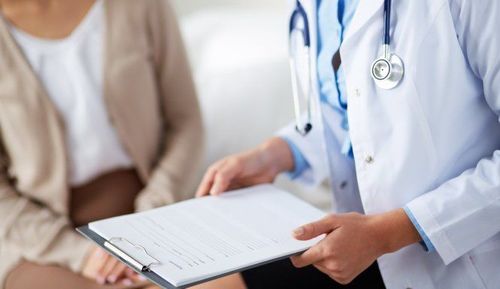
Người bệnh nên tuân thủ chỉ định và chỉ dẫn của bác sĩ kê đơn thuốc Edoxaban
5. Edoxaban drug interactions
Drug interactions can change the way Edoxaban works or increase your risk of serious side effects. Make a list of all the medications you take (including prescription/nonprescription drugs and herbal products) and share it with your doctor. Do not start, stop, or change the dose of any medicine while you are being treated with Edoxaban, without your doctor's approval. Some drugs that may interact with Edoxaban include: Mifepristone, other drugs that can cause bleeding/bruising (including antiplatelet drugs such as clopidogrel, anticoagulants such as warfarin, enoxaparin), certain antidepressants (including SSRIs such as fluoxetine, SNRIs such as desvenlafaxine/venlafaxine).
Other drugs may affect the removal of edoxaban from your body, which may affect how edoxaban works. One of them is Rifampin.
Double check all prescription and nonprescription drug labels you are taking, as many medications contain pain relievers/fever reducers (aspirin, NSAID such as ibuprofen or naproxen) which can increase your risk of bleeding if Concomitant use with Edoxaban. However, if your doctor has directed you to take low-dose aspirin to prevent a heart attack or stroke (usually at doses of 81-325 milligrams per day), you should continue to take aspirin unless your doctor directs you otherwise. .
6. What to do when overdose or forget to take Edoxaban?
If you or someone else has overdosed on Edoxaban and has severe symptoms such as fainting or difficulty breathing, call 911 right away. Edoxaban overdose symptoms may include: Bloody/black/tarry stools, pink/dark urine, unusual/prolonged bleeding.
If you miss a dose of Edoxaban, take it as soon as you remember on the same day. If it is almost time for your next dose of Edoxaban, skip the missed dose. Take your next dose of Edoxaban at the usual time, do not double your usual dose.
7. How to store the medicine Edoxaban
Store Edoxaban at room temperature, away from light and moisture. Do not store Edoxaban in the bathroom, keep the medicine away from children and pets.
Do not flush Edoxaban down the toilet or down the drain unless instructed to do so. Dispose of this medication appropriately when it has expired or is no longer needed.
Please dial HOTLINE for more information or register for an appointment HERE. Download MyVinmec app to make appointments faster and to manage your bookings easily.
Reference source: webmd.com



